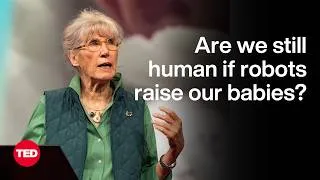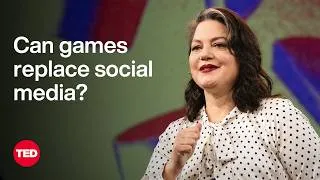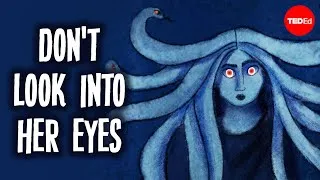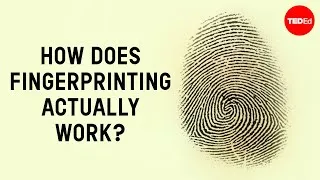What is the shape of a molecule? - George Zaidan and Charles Morton
331,831 views ・ 2013-10-17
请双击下面的英文字幕来播放视频。
翻译人员: Gabriella Hu
校对人员: Claire Zhang
00:07
What is the shape of a molecule?
0
7270
2227
分子是什么形状?
00:09
Well, a molecule is mostly empty space.
1
9497
2670
分子内部大部分都是空的。
00:12
Almost all of its mass is concentrated
2
12167
1834
几乎所有的质量都集中在
00:14
in the extremely dense nuclei of its atoms.
3
14001
3367
原子极其致密的核上。
00:17
And its electrons,
4
17368
939
而它的电子,
00:18
which determine how the atoms
5
18307
1483
则决定原子之间
00:19
are bonded to each other,
6
19790
994
如何相互结合,
00:20
are more like clouds of negative charge
7
20784
2523
它们比较像带负电荷的云,
00:23
than individual, discrete particles.
8
23307
2277
而不是一颗颗单独的粒子。
00:25
So, a molecule doesn't have a shape
9
25584
1810
因此,分子并不像
00:27
in the same way that, for example,
10
27394
1745
雕塑一样
00:29
a statue has a shape.
11
29139
1867
有着特定的形状。
00:31
But for every molecule,
12
31006
1075
但是对于每一个分子
00:32
there's at least one way
13
32081
1375
至少存在一种方式
00:33
to arrange the nuclei and electrons
14
33456
2055
排列原子核和电子,
00:35
so as to maximize the attraction
15
35511
2201
使得相异电荷之间的
00:37
of opposite charges
16
37712
1138
吸引力最大化,
00:38
and minimize the repulsion
17
38850
1536
相同电荷之间的排斥力
00:40
of like charges.
18
40386
2213
最小化。
00:42
Now, let's assume that the only electrons
19
42599
1748
现在我们假设唯一与分子形状
00:44
that matter to a molecule's shape
20
44347
1544
有关的电子
00:45
are the outermost ones from each participating atom.
21
45891
2917
是每个原子最外层上的电子。
00:49
And let's also assume
22
49454
1050
同时我们也假设
00:50
that the electron clouds in between atoms,
23
50504
2389
在原子之间的电子云,
00:52
in other words, a molecule's bonds,
24
52893
1668
也就是分子键,
00:54
are shaped kind of like sausages.
25
54561
2908
形状像一根香肠。
00:57
Remember that nuclei are positively charged
26
57469
2820
记住原子核是带有正电荷的,
01:00
and electrons are negatively charged,
27
60289
1956
而电子是带负电的,
01:02
and if all of a molecule's nuclei
28
62245
1486
而且如果所有分子的核
01:03
were bunched up together
29
63731
1090
都堆积到了一起,
01:04
or all of its electrons were bunched up together,
30
64821
2168
或者它所有的电子都堆积到了一起,
01:06
they would just repel each other and fly apart,
31
66989
2244
它们会相互排斥并且飞散,
01:09
and that doesn't help anyone.
32
69233
1772
那就没什么用了。
01:11
In 1776, Alessandro Volta,
33
71451
2652
1776年,亚历山德罗·伏打
01:14
decades before he would eventually invent batteries,
34
74103
2496
在他发明电池数十年前
01:16
discovered methane.
35
76599
1664
发现了甲烷。
01:18
Now, the chemical formula of methane is CH4.
36
78263
3870
甲烷的化学式是CH4。
01:22
And this formula tells us
37
82133
993
这个化学式告诉我们
01:23
that every molecule of methane
38
83126
1674
每个甲烷分子
01:24
is made up of one carbon and four hydrogen atoms,
39
84800
3642
都是由一个碳原子和四个氢原子构成的,
01:28
but it doesn't tell us what's bonded to what
40
88442
2697
但是它并没有告诉我们
哪个原子与哪个原子连在一起,
01:31
or how they atoms are arranged in 3D space.
41
91139
3393
或者在三维空间中这些原子是如何排列的。
01:34
From their electron configurations,
42
94532
1680
从它们的电子排布中
01:36
we know that carbon can bond
43
96212
1494
我们知道碳原子能与
01:37
with up to four other atoms
44
97706
1825
其他四个原子相连,
01:39
and that each hydrogen can only bond
45
99531
2045
而且每个氢原子只能与
01:41
with one other atom.
46
101576
1458
一个原子相连。
01:43
So, we can guess
47
103034
1368
因此我们能够猜测
01:44
that the carbon should be the central atom
48
104402
1886
碳原子应该是中心原子,
01:46
bonded to all the hydrogens.
49
106288
2618
与所有的氢原子相连。
01:48
Now, each bond represents
50
108906
1134
现在,每个键代表
01:50
the sharing of two electrons
51
110040
1618
共用两个电子,
01:51
and we draw each shared pair of electrons as a line.
52
111658
2912
我们用一条线表示一对共用电子。
01:54
So, now we have a flat representation
53
114570
2231
于是,我们现在得到了这个原子的
01:56
of this molecule,
54
116801
1463
平面示意图,
01:58
but how would it look in three dimensions?
55
118264
2562
但是在三维空间中它看起来是什么样的?
02:00
We can reasonably say
56
120826
981
我们能够合理地说
02:01
that because each of these bonds
57
121807
1462
因为每个键都是
02:03
is a region of negative electric charge
58
123269
2326
一个带负电的区域,
02:05
and like charges repel each other,
59
125595
1808
同性互斥,
02:07
the most favorable configuration of atoms
60
127403
2166
最可能的原子构型
02:09
would maximize the distance between bonds.
61
129569
2761
应该使得键与键之间的距离最大。
02:12
And to get all the bonds
62
132330
1413
而要使得所有的键之间的
02:13
as far away from each other as possible,
63
133743
2328
距离尽可能地远,
02:16
the optimal shape is this.
64
136071
2441
最合适的形状是这样子的。
02:18
This is called a tetrahedron.
65
138512
2346
这叫做四面体。
02:20
Now, depending on the different atoms involved,
66
140858
2043
根据不同的原子,
02:22
you can actually get lots of different shapes.
67
142901
2422
你可以得到很多种不同的形状。
02:25
Ammonia, or NH3, is shaped like a pyramid.
68
145323
2976
氨,NH3,是金字塔形。
02:28
Carbon dioxide, or CO2, is a straight line.
69
148299
2823
二氧化碳,CO2,是直线形。
02:31
Water, H2O, is bent like your elbow would be bent.
70
151122
3426
水,H2O,像弯折的手臂。
02:34
And chlorine trifluoride, or ClF3,
71
154548
2581
而三氟化氯,ClF3,
02:37
is shaped like the letter T.
72
157129
2086
形状像字母T。
02:39
Remember that what we've been doing here
73
159215
1694
记住,我们现在做的
02:40
is expanding on our model of atoms and electrons
74
160909
2652
是根据我们的原子和电子模型
02:43
to build up to 3D shapes.
75
163561
2282
建立分子的三维形状。
02:45
We'd have to do experiments
76
165843
1094
我们必须通过做实验
02:46
to figure out if these molecules
77
166937
1201
来确认这些分子的形状
02:48
actually do have the shapes we predict.
78
168138
2351
是否和我们预测的一样。
02:50
Spoiler alert:
79
170489
873
剧透一下:
02:51
most of the do, but some of them don't.
80
171362
2192
很多是符合的,但是也有一些与预测不符。
02:53
Now, shapes get more complicated
81
173554
1384
因为随着原子数目的增加,
02:54
as you increase the number of atoms.
82
174938
1999
分子的形状变得越来越复杂。
02:56
All the examples we just talked about
83
176937
1637
我们前面提到的所有例子
02:58
had one obviously central atom,
84
178574
2497
只有一个明显的中心原子。
03:01
but most molecules,
85
181071
1254
但是大部分的分子并没有,
03:02
from relatively small pharmaceuticals
86
182325
1623
小到药物小分子,
03:03
all the way up to long polymers
87
183948
1426
大到很长的多聚体,
03:05
like DNA or proteins, don't.
88
185374
2369
比如DNA,都没有中心原子。
03:07
The key thing to remember
89
187743
1065
最关键的是
03:08
is that bonded atoms will arrange themselves
90
188808
2071
参与连结的原子会自动排列,
03:10
to maximize the attraction between opposite charges
91
190879
2733
使得异种电荷之间的吸引力达到最大,
03:13
and minimize the repulsion between like charges.
92
193612
3105
同种电荷之间的排斥力达到最小。
03:16
Some molecules even have two or more
93
196717
2252
有些分子甚至有两种或者更多的
03:18
stable arrangements of atoms,
94
198969
1539
稳定的原子排列方式,
03:20
and we can actually get really cool chemistry
95
200508
1962
在不同的构型之间转换,
03:22
from the switches between those configurations,
96
202470
2720
我们会看到化学是多么酷炫,
03:25
even when the composition of that molecule,
97
205190
2116
即使分子的构成,
03:27
that's to say the number and identity of its atoms,
98
207306
2588
即其中原子的数量和种类
03:29
has not changed at all.
99
209894
2291
根本没有改变。
New videos
Original video on YouTube.com
关于本网站
这个网站将向你介绍对学习英语有用的YouTube视频。你将看到来自世界各地的一流教师教授的英语课程。双击每个视频页面上显示的英文字幕,即可从那里播放视频。字幕会随着视频的播放而同步滚动。如果你有任何意见或要求,请使用此联系表与我们联系。







